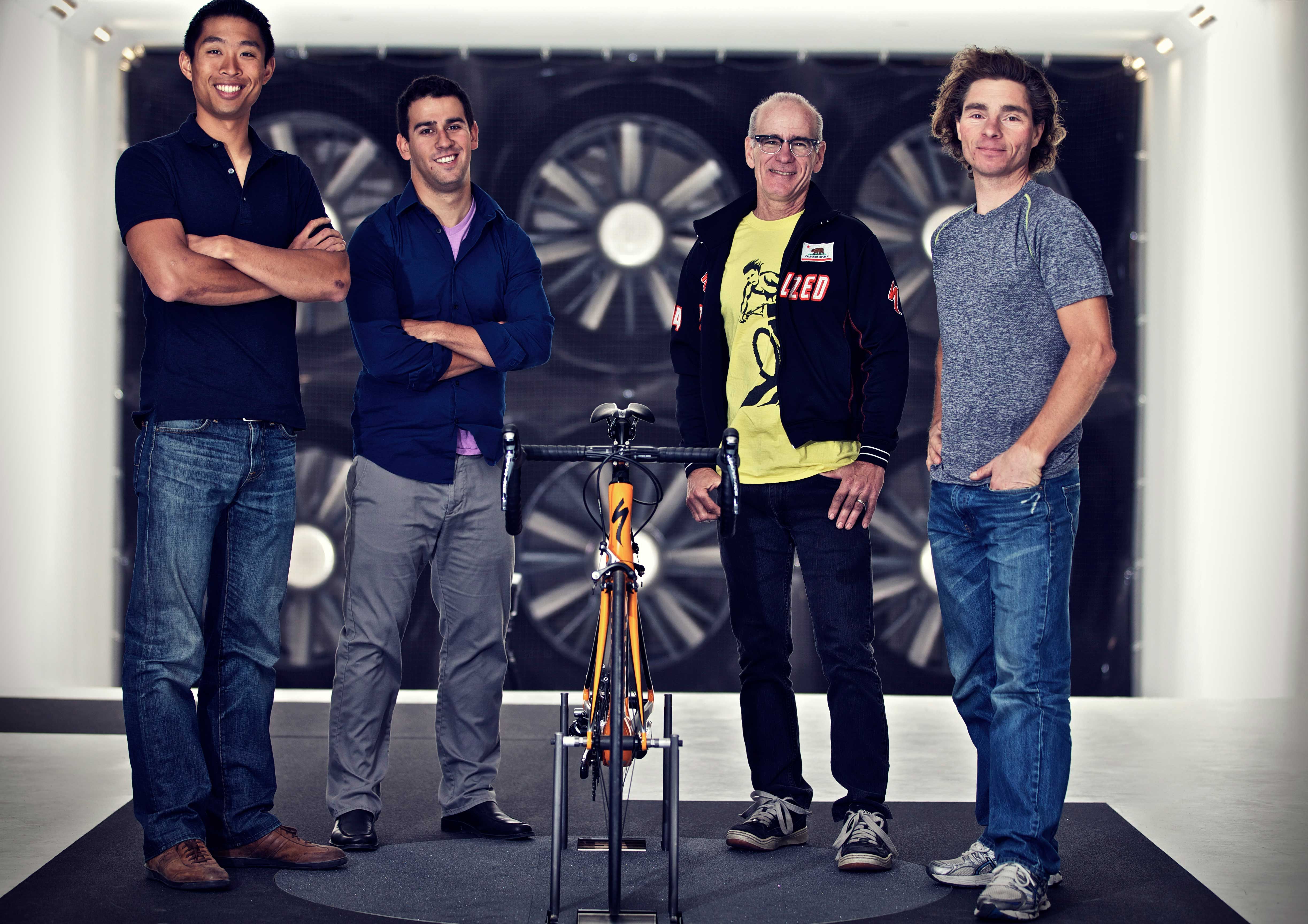
Chris D’Aluisio, creative specialist at Specialized in Morgan Hill, California
A great bike design boils down to problem-solving. You can ask riders, “What’s wrong with your bike?” and almost no one knows the answer. So we have to answer questions that no one’s asking. And we do that by examining what a bike does—whether it’s descending, climbing, or going through high-speed or low-speed corners.
Stiffness is important. People say: “I don’t need a bike that’s stiff because I don’t have that much power.” But stiffness is more important for a rider who is unfit and has extra weight than for a wafer-thin pro with tons of power. The bike needs to react to them and not send them out of control. Stiffness is not always about power transfer; it’s about handling and control. Aerodynamics is the one thing that affects everyone on every bike. We all go through the same air, and we all generally want to go farther with less energy. You don’t need a whole new bike to get aerodynamic; you can do simple things to add to the distance and ease of the ride.
Aerodynamics is the one thing that affects everyone on every bike.
If you want to extend your 100km ride and do 125 and you’re not sure which way the wind’s blowing, an aerodynamic bike can make or break your day. The difference could be 20 to 30 watts. That’s huge. You’d have to train a long time to get that kind of power.
A GREAT BIKE HAS A CONTINUITY OF SERIOUSNESS
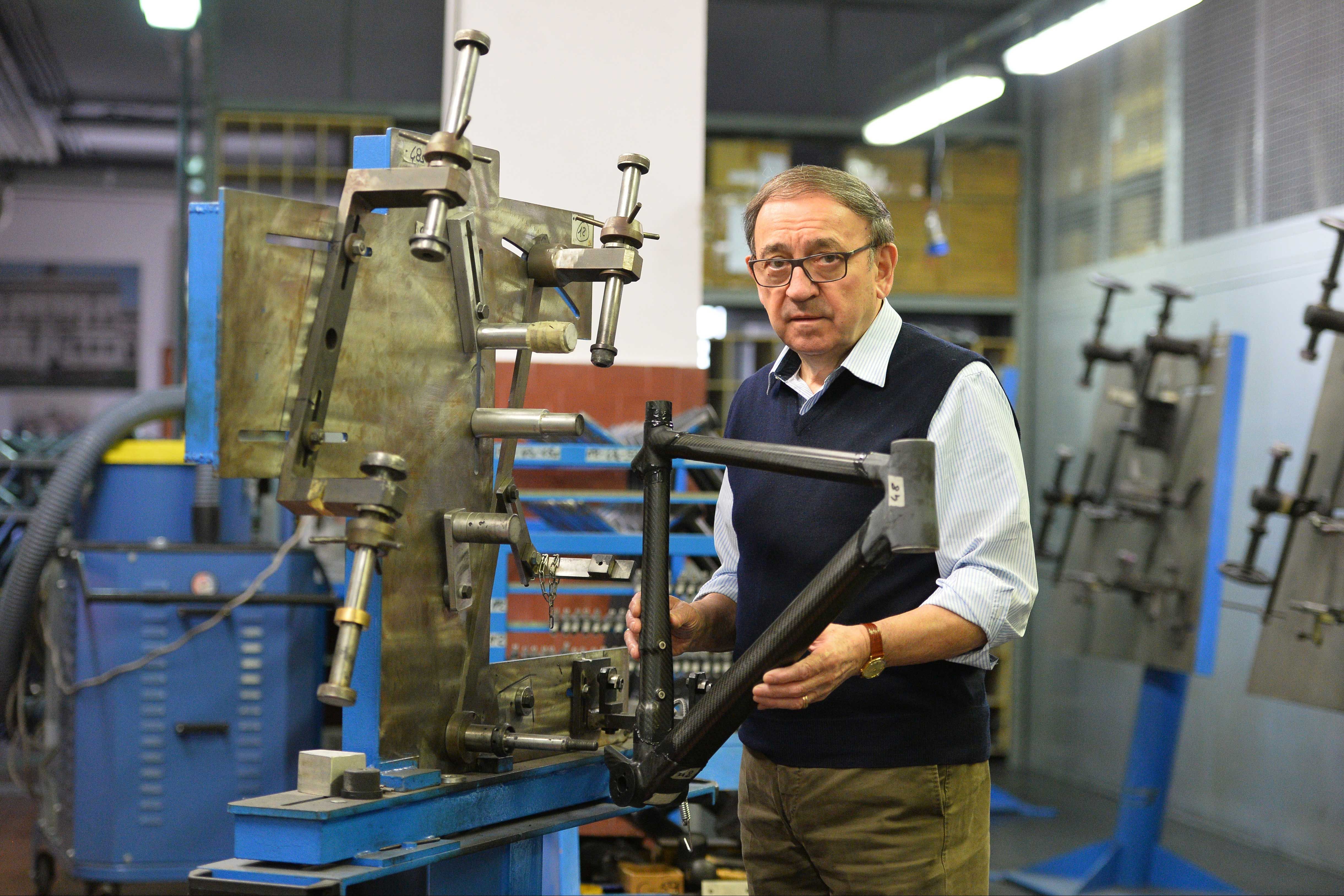
Ernesto Colnago, legendary designer, Cambiago, Italy
The quality of the materials that are used above all [is what makes a bike great]. Unfortunately, the carbon fiber in the eyes of the people could seem all the same, but it is not so. A best-quality carbon fiber is much more expensive than a cheaper one, but aesthetically they are similar. And then there is the continuity of seriousness; Colnago has been making bicycles for 66 years. I have always done my job with passion and I have never copied from anyone.
Because the frame of a bicycle is like the heart, it must be strong to withstand all the impacts and power of the rider. If a bike weighs 7 kilos and a frame weighs 1 kilo, there are another 6 kilos to work on to look for lightness.
A good bike is like a made-to-measure suit.
The frame of a racing bicycle must be safe. I put safety first, which must never be missing. It also depends on the type of rider. A climber will be able to use a light bike, while a sprinter will need a stronger one. We were the first to invest a lot of money in research with Ferrari engineering; we carried out safety studies that had never been done in the cycling world. So I would say safety, quality, and durability.
A good bike is like a made-to-measure suit. Our C64 is the only frame in the world that can still be built in this way. We have 14 standard sizes; we are the only ones to make such a frame. Compared to many years ago, the technology of materials has changed, but the bicycle has changed substantially little. People like me who worked well in the beginning continue to do it now. To build good bikes, you need a lot of passion and love for cycling.
A GREAT BIKE TAKES YOU TO THE ENDORPHINAGE
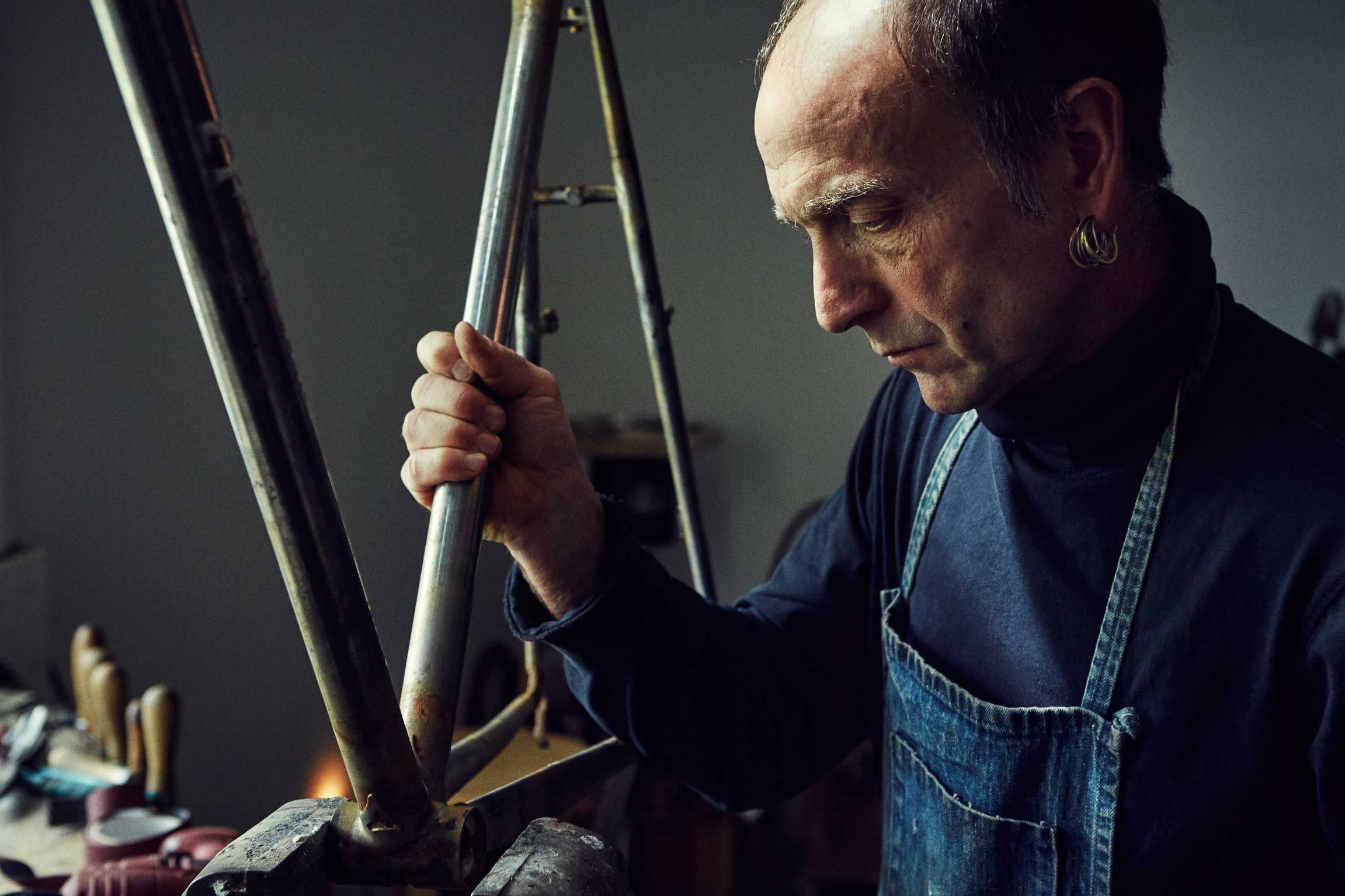 Richard Sachs, framebuilder and owner of Richard Sachs Cycles in Chester, Connecticut
Richard Sachs, framebuilder and owner of Richard Sachs Cycles in Chester, Connecticut
This isn’t about aero position or light weight or ease of pedaling; it’s about getting to the grocery store or going to the bike path and having the opportunity to go to the endorphinage, if you will. (My wife, Deb, actually coined the phrase, so if somebody else uses it, they should pay her.)
Once you leave the driveway, it shouldn’t be about the bike. It should be about the ride—the visceral experience. On a great bike, I don’t need to think about the steering or give it any attention. You’re not really moving forward if you’re thinking about the bike, if the bike has a glitch in it. If the saddle’s too low, you can just raise it. But you can’t change the steering geometry, and there are companies that make bikes with wonky steering geometry.
You have to listen to the metal because the metal always decides what it wants to be.
I want people to like my bikes in all dimensions. My goal is to make the perfect bike for that person’s morphology, flexibility, fitness level, knees, whatever. However, there are lots of things I won’t compromise, certain tenets that simply have to be. The wheels have to be in a certain place; the hands have to be in a certain place. You should be able to see a certain amount of things. You shouldn’t be too hunched over or too upright. The bike can’t be too short because it won’t steer correctly. It can’t be too high or it won’t spin correctly. The back can’t be too short because the gears won’t shift correctly.
READ MORE Local is Lekker: The Mercer Edition
I know a metric shitload about design and how to achieve a good position for a rider on a bicycle. But I still have to make it. It’s about taking the metal, shortening it, shaping it, joining all the intersections, and doing it in such a way that the actual touch—the interaction between man and the material and tools—enhances it. When I construct a bicycle frame, it takes on a life unto itself. No two are alike. Even if I made two bikes with the same dimensions and material in a row, they wouldn’t be identical because of the tactile senses involved—how my heart’s beating, what I’m thinking about, how much I ate for lunch.
Touching the material is important. You have to listen to the metal because the metal always decides what it wants to be. Many people don’t understand that the most important component here is the ability to listen to what’s happening with your tools.
A GREAT BIKE HAS STYLE AND SUBSTANCE
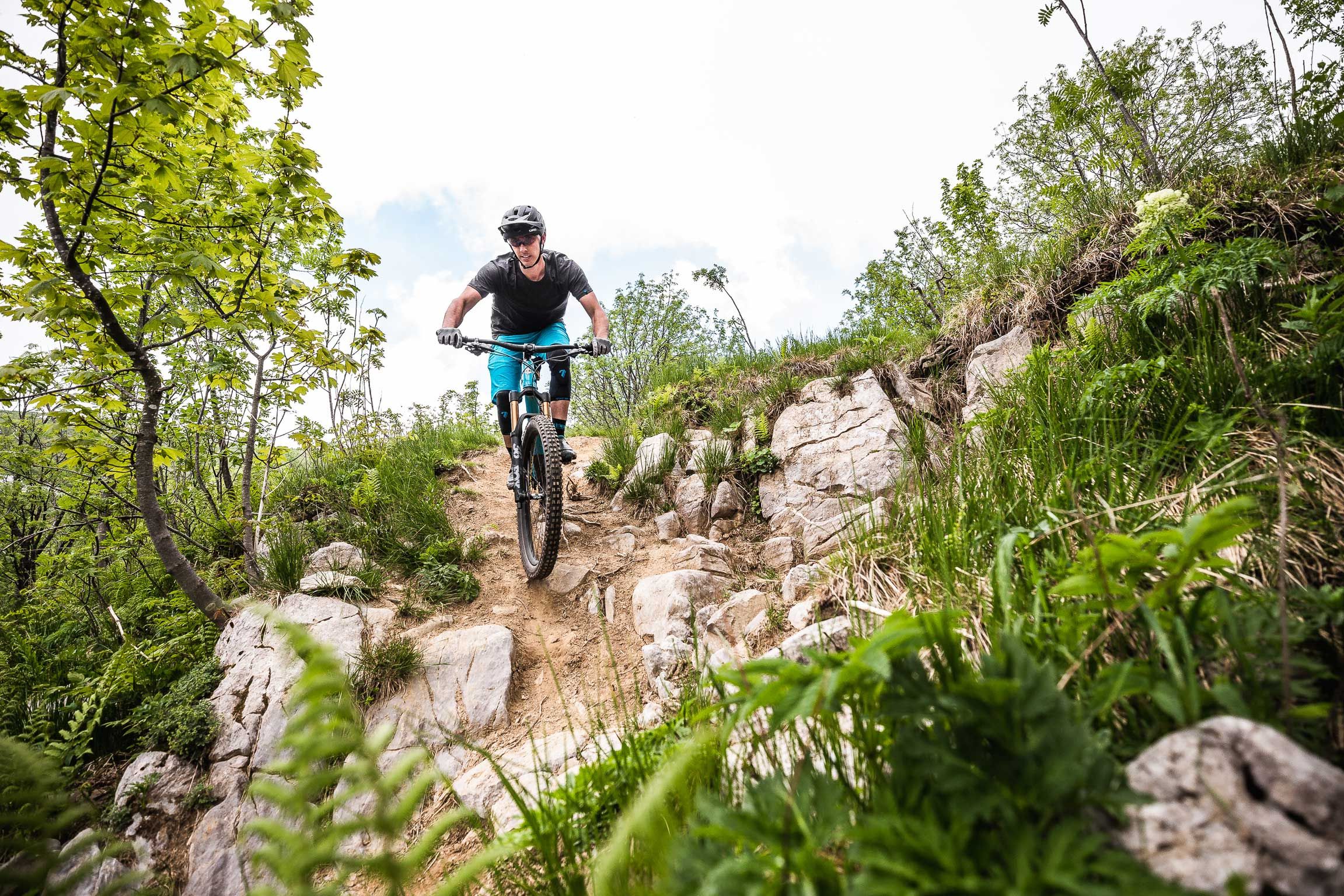 Peter Zawistowski, director of engineering at Yeti Cycles in Golden, Colorado
Peter Zawistowski, director of engineering at Yeti Cycles in Golden, Colorado
On the technical side, we try to figure out the right geometry, the right suspension, kinematics, and layout. The geometry gives us a backbone to design around. Then we shift gears and think over the artistic side: We try to come up with a perfect balance between a machine that’s going to perform well and a machine that’s going to be beautiful. The aesthetic side matters. You’re not just making something technical that’s going to go in a box that no one’s going to see. The form of the bike should match the performance on the engineering side and should speak for itself. If you look at our lineup now, the bikes barely even say Yeti on them. And I think most people would likely be able to tell what bike it is without a giant logo plastered on it. It’s all subjective. We’re looking for something that isn’t too clumsy and noisy and loud, something that’s sleek and modern.
A GREAT BIKE IS MADE TO PLAY

Emily Kachorek, bike racer and co-founder of Squid Bikes in Sacramento, California
What makes a bike great is how you have a bunch of memories with it. Ultimately it matters less about the bike itself and more about your connection with it, how it fits into your life. When we started Squid Bikes, if you wanted one, you had to paint it yourself. I wanted my kit, my bike, and all of my equipment to represent my personality. When I looked at the market, most bikes looked pretty much the same. And that wasn’t my vibe. It’s a machine for us to play on—why not have fun with it?
Custom painting is expensive. Squid’s aesthetic has a more surf-skate vibe. I think this pushed some people out of their comfort zones, but many people were excited because, through the process of painting their bike (whether we did it for them, or they used our kit), they ended up with a product that didn’t look like any other bike out there. It connects people to the machine in a way that you don’t get if you’re just going to a showroom floor or the Internet and hitting the “buy now” button.
A GREAT BIKE BALANCES YOU
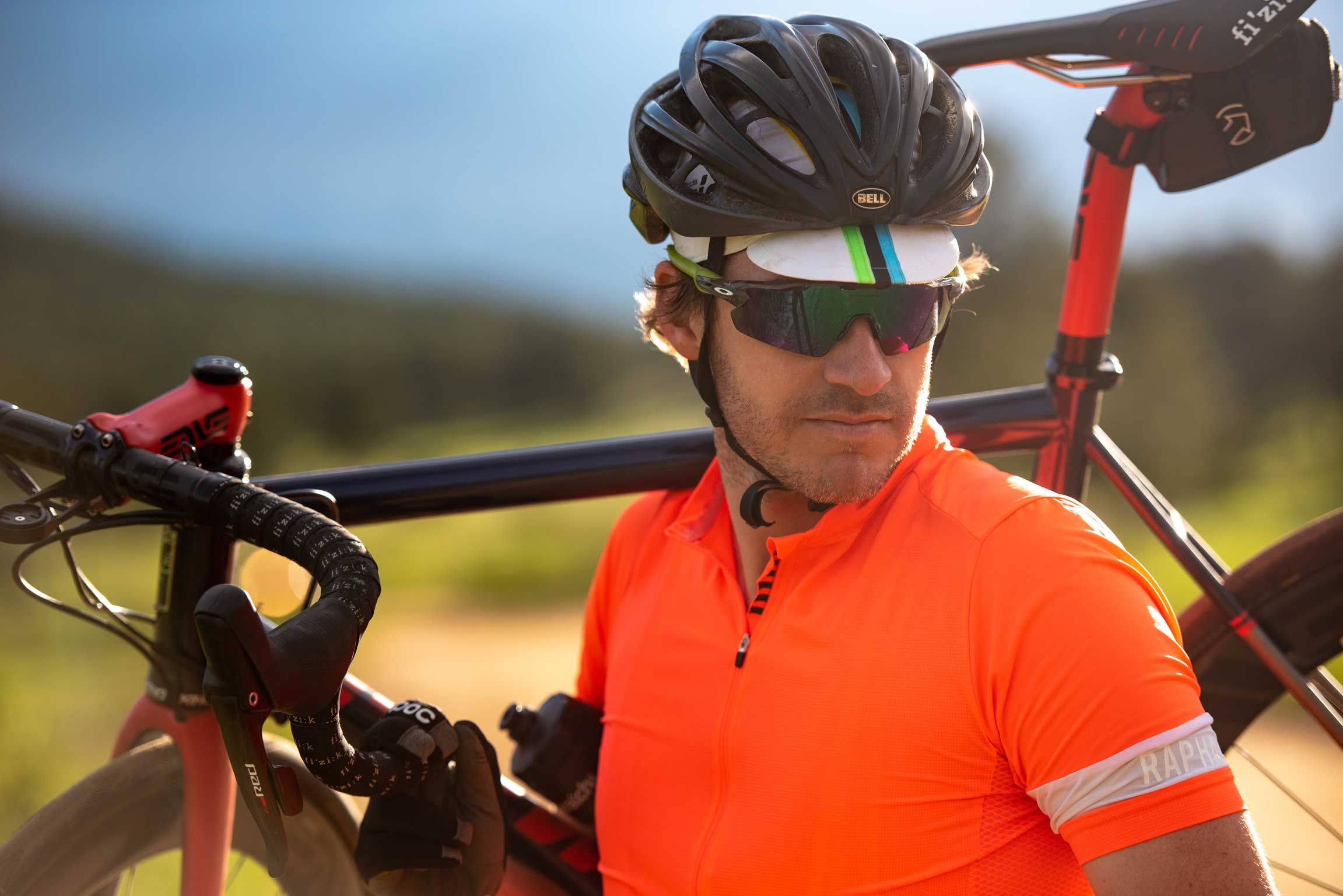 Aaron Barcheck, framebuilder and founder of Mosaic Bespoke Bicycles in Boulder, Colorado
Aaron Barcheck, framebuilder and founder of Mosaic Bespoke Bicycles in Boulder, Colorado
I’ve been building frames for 18 or 19 years, and for me, the ride quality of a great bike is all about balance. It’s about what the bike is intended to do and the design approach to that frame and how the coalescing of components around it help do that specific task. In terms of materials—whether it’s carbon, aluminium, titanium, or steel—every choice has its own positives and negatives; there’s always a give and take. When we start that conversation with a customer, we don’t tell them what they need. It’s more about finding out what they want to do with a bike and then fine-tuning bit by bit.
A GREAT BIKE KNOWS THE ROAD YOU’RE ON
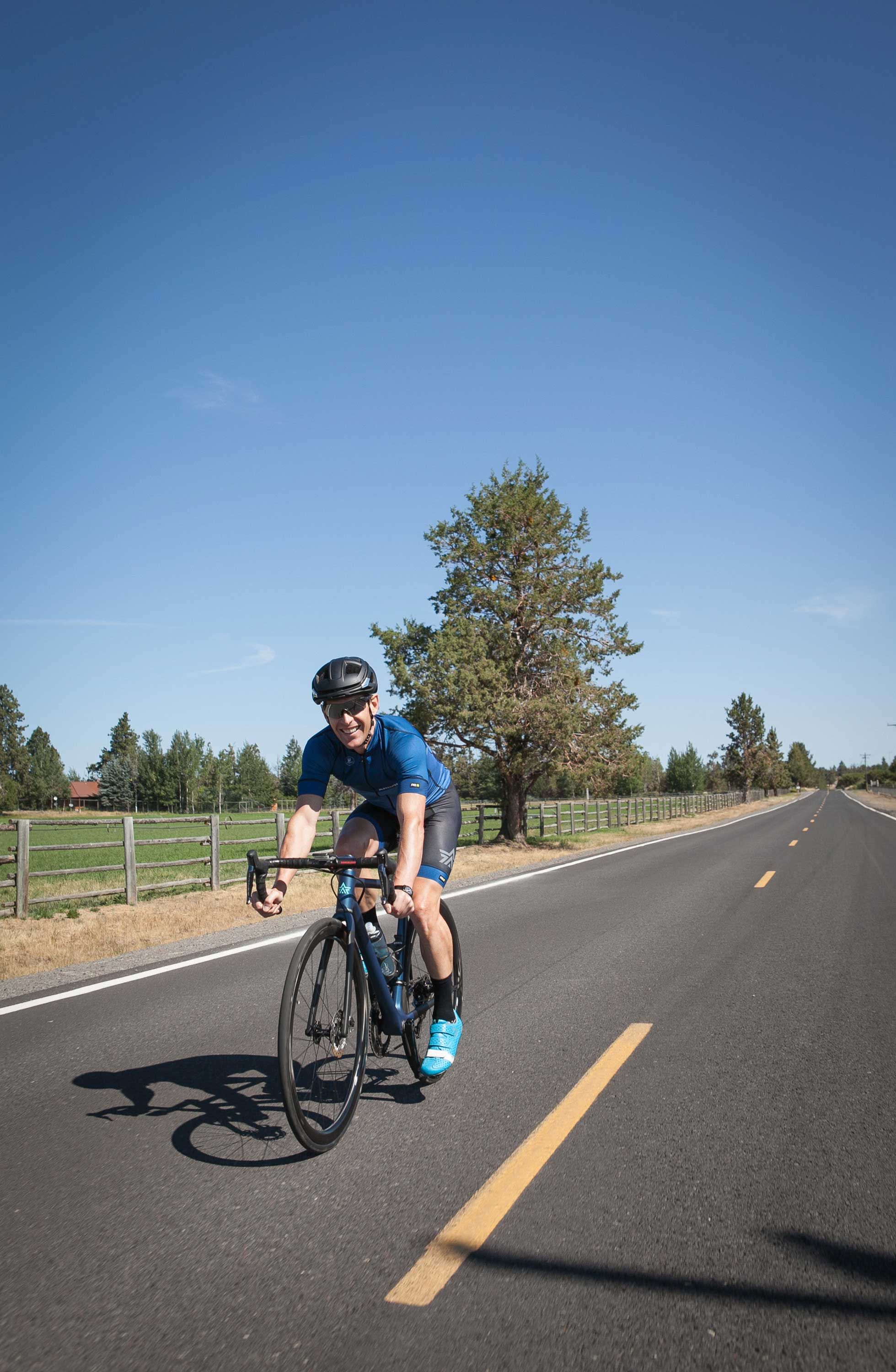
Ben Farver, framebuilder and founder of Argonaut Cycles in Bend, Oregon
A great bike has nuance, subtlety, and character, and is engaged and active with the rider and their efforts, rather than just being a passive transfer of energy. Three critical factors impact the personality of a bike. One is acceleration, that feeling of loading a bow and releasing. Two is horizontal compliance, so the bike doesn’t beat you up and you can spend all day on it. Three is how well the bike resists twisting forces that you put on it when you’re descending and turning—and how it flexes so that you’re able to drive it effectively through a corner.
You really can make a bike that’s comfortable and extremely responsive. You should be able to feel the kind of road surface you’re on but not in a negative way. It’s like the difference between walking around on a hardwood floor in bare feet or on concrete in bare feet, you know?
YES, A GREAT BIKE IS COMFORTABLE (WITH LONG CHAINSTAYS)
 Greg LeMond, founder and chairman of LeMond Carbon in Oak Ridge, Tennessee
Greg LeMond, founder and chairman of LeMond Carbon in Oak Ridge, Tennessee
Several years ago, while visiting my father in Reno, Nevada, I rode one of my first steel production bikes that was made by Roland Della Santa. The moment I got on the bike I loved the feel. It was stable, seemed to eat up all the bumps, and descended as well as any modern bike produced today. I measured the bike and realized that the one design difference was that the bike’s rear stays were close to 4 centimeters longer than on most modern bikes. Today’s bikes have very short stays, and even worse, most use the same stay lengths on all sizes. This means that a bike that’s in that sweet spot for some riders will be less than the optimum for others.
In 2016 I started a new company, LeMond Carbon, supplying the automotive industry, wind energy, and transportation markets with low-cost carbon fiber. Being in the carbon-fiber business has given me insight into the material. I have no doubt that it’s the best material for bikes. Most pro riders, if given a choice, will ride what is most comfortable. Weight is also a consideration. Most aero frames are up to 500 grams heavier and have odd-shaped tubes that play a role in the harshness of the ride. Since 98 percent of a race is spent riding inside the peloton, an aero bike gives the rider almost no benefit. The only time an aero road frame makes a real difference is in a solo breakaway or in a small group breakaway. And on most stages, weight is a bigger factor than aerodynamics.
A GREAT BIKE IS A RELIABLE MACHINE
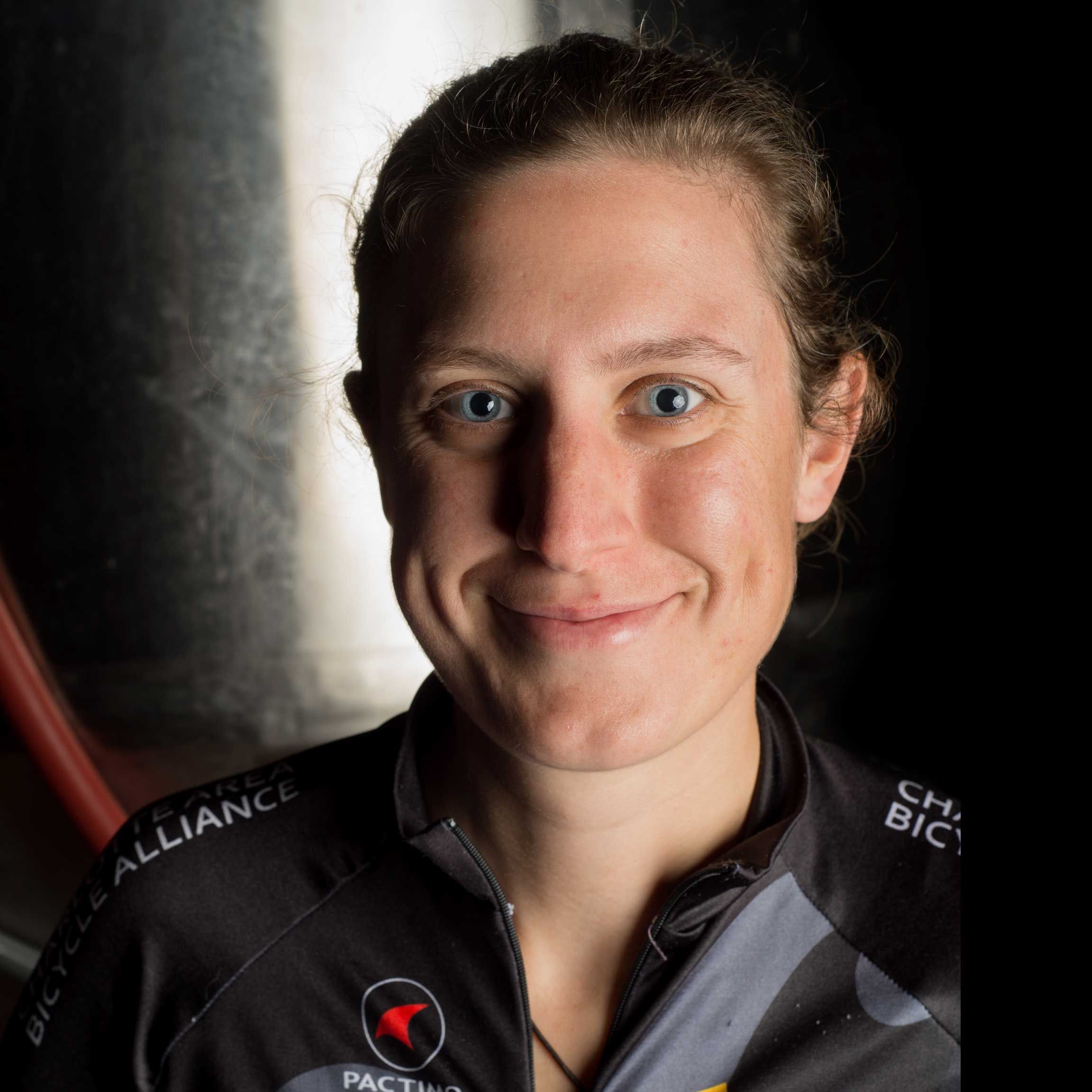 Arleigh Greenwald, owner of the Bike Shop Girl bike shop in Denver, Colorado
Arleigh Greenwald, owner of the Bike Shop Girl bike shop in Denver, Colorado
I look at the ideal bike as a tool, as a reliable machine, instead of a work of art that people have to worry about. My tagline is: “Leave the car at home.” I like bikes that leave the shop with similar features as cars: locks, durable tires, fenders, and lights. I want to sell bikes that customers will never feel like they need to upgrade. And it’s important that people can ride in a comfortable position so they can get on the bike at any time of day no matter what they’re wearing. In city and cargo bikes, the things I want most are quality brakes, a drivetrain that isn’t too fancy, and durable tires. I’ll upgrade tires at cost if the bike comes with crap—it’s the most vulnerable part of the bike. You don’t want to flat on a 100-pound cargo bike with your two kids in the front.





 Richard Sachs, framebuilder and owner of Richard Sachs Cycles in Chester, Connecticut
Richard Sachs, framebuilder and owner of Richard Sachs Cycles in Chester, Connecticut Peter Zawistowski, director of engineering at Yeti Cycles in Golden, Colorado
Peter Zawistowski, director of engineering at Yeti Cycles in Golden, Colorado
 Aaron Barcheck, framebuilder and founder of Mosaic Bespoke Bicycles in Boulder, Colorado
Aaron Barcheck, framebuilder and founder of Mosaic Bespoke Bicycles in Boulder, Colorado
 Greg LeMond, founder and chairman of LeMond Carbon in Oak Ridge, Tennessee
Greg LeMond, founder and chairman of LeMond Carbon in Oak Ridge, Tennessee Arleigh Greenwald, owner of the Bike Shop Girl bike shop in Denver, Colorado
Arleigh Greenwald, owner of the Bike Shop Girl bike shop in Denver, Colorado